Not just Boracay...
Ultimate Guide to Hajj And Umrah 2025: Essential Tips For First-Time Pilgrims
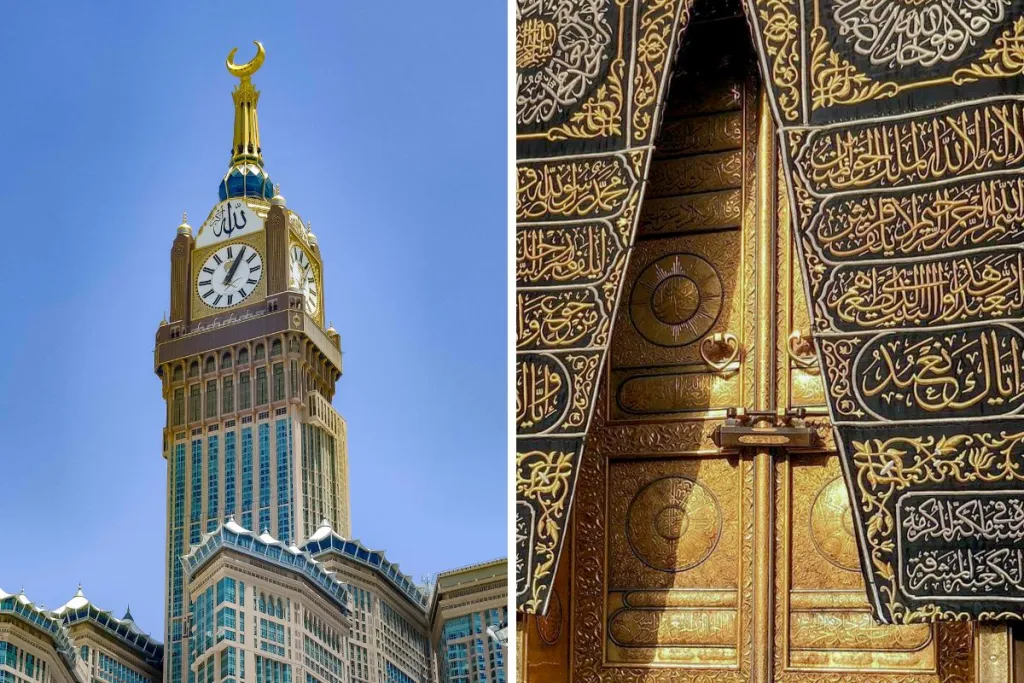
Embarking on the sacred journeys of Hajj and Umrah is a profound experience for Muslims worldwide. For first-time pilgrims, understanding the steps and preparations involved can make the journey more meaningful and less daunting. This guide aims to provide clear and comprehensive insights for navigating the spiritual path with clarity and confidence.
Understanding Hajj and Umrah
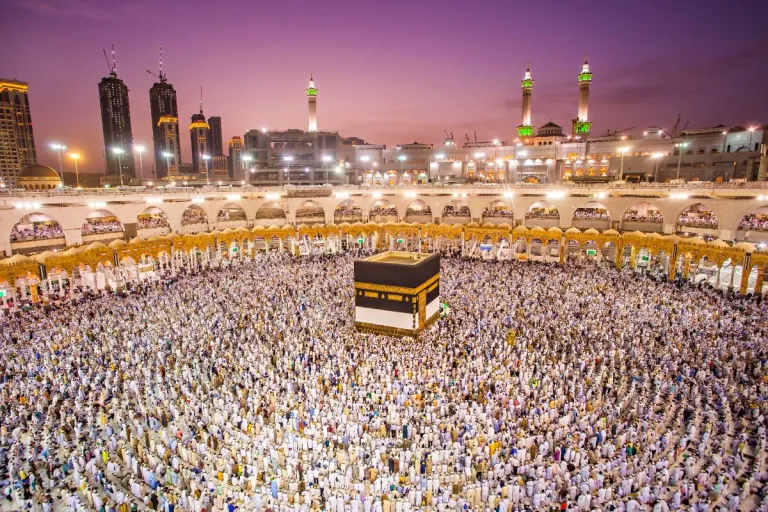 Image credit: Sony Herdiana via Canva Pro
Image credit: Sony Herdiana via Canva Pro
Also read: What Is Hajj and Why Is It Important to Muslims?
Hajj is one of the five pillars of Islam and is an obligatory pilgrimage for Muslims who are physically and financially capable of undertaking it. Conducted annually during the Islamic month of Dhu al-Hijjah, Hajj comprises a series of rituals performed over several days, commemorating the actions of the Prophet Ibrahim (Abraham) and his family. Conversely, Umrah, often referred to as the "lesser pilgrimage," is not obligatory but holds immense spiritual significance. Unlike Hajj, Umrah can be performed at any time of the year and involves fewer rituals, making it more accessible to many Muslims.
Planning the pilgrimage
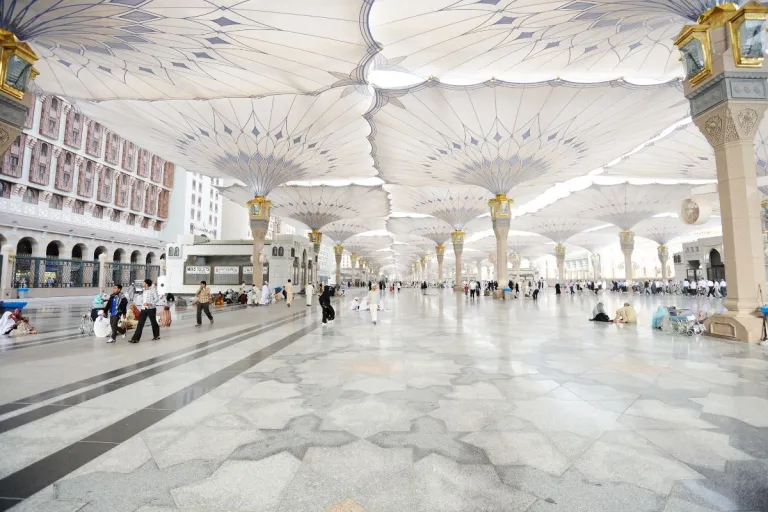 Image credit: Zurijeta via Canva Pro
Image credit: Zurijeta via Canva Pro
Also read: Your Comprehensive Umrah Guide: Things to Do When Going For Pilgrimage
Passport and Visa: A valid passport with at least six months of remaining validity is required. Pilgrims must apply for a Hajj or Umrah visa through authorised travel agencies or the Saudi embassy. As visa requirements and processes vary by country, it is essential to check the most up-to-date guidelines.
Flights: Booking flights to King Abdulaziz International Airport (JED) in Jeddah or Prince Mohammad Bin Abdulaziz Airport (MED) in Medina well in advance ensures better options and pricing.
Accommodation: Lodging should be selected based on budget and proximity to the holy sites. Hotels near the sites offer convenience but are often more expensive, while accommodations farther away frequently provide shuttle services.
Currency Exchange: Converting currency to Saudi Riyals (SAR) is necessary for daily expenses. Pilgrims should also consult healthcare providers regarding vaccinations or other health precautions required for travel.
Travel Insurance: Pilgrims are encouraged to purchase travel insurance that covers health, cancellations, and emergencies to ensure peace of mind during the journey.
Clothing and Essentials: Pack lightweight, breathable clothing appropriate for the hot climate, comfortable footwear, a prayer mat, toiletries, and any necessary medications. An umbrella and sunscreen are also useful to protect against the sun.
Performing Umrah: Step-by-step
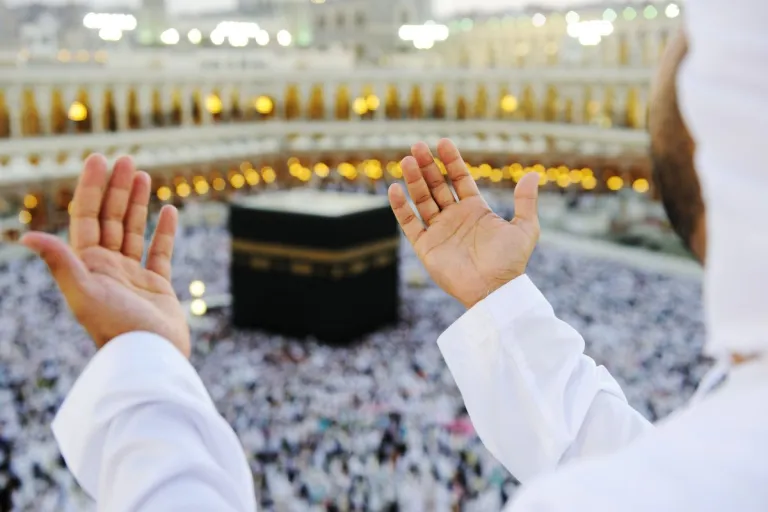 Image credit: Zurijeta via Canva Pro
Image credit: Zurijeta via Canva Pro
Ihram: Pilgrims begin by entering a state of spiritual purity. This involves performing ablutions and wearing the prescribed attire—two white, unstitched clothes for men and modest clothing for women. The intention (niyyah) for Umrah is then declared, followed by the recitation of the Talbiyah:
“Labbayk Allahumma Labbayk, Labbayk laa shareeka laka Labbayk, Innal hamda wan-ni’mata laka wal-mulk, laa shareeka lak.”
Pilgrims should remain in the state of Ihram and avoid prohibited actions until the rituals are completed.
Tawaf: Upon arriving at the Masjid al-Haram in Mecca, pilgrims perform Tawaf by circling the Kaaba seven times in a counter-clockwise direction, beginning at the Black Stone. This act symbolises the unity of believers in worshipping the One God. During Tawaf, pilgrims may recite:
“Subhan-Allahi wal-hamdu-Lillahi wa laa ilaaha ill-Allahu Wallahu Akbar.”
Pilgrims should stay focused on their prayers and remain patient despite the crowds.
Sa’i: Pilgrims walk seven times between the hills of Safa and Marwah, reenacting Hagar’s search for water for her son, Ishmael. At Safa, pilgrims can recite:
“Inna as-Safa wal-Marwata min sha’aa’iril-lah.”
Water from the Zamzam well is available during this ritual and is encouraged for drinking as part of the spiritual journey.
Halq or Taqsir: The Umrah concludes with Halq (shaving the head) or Taqsir (trimming a portion of hair). Women typically trim a small lock of hair. Completing this act symbolises humility and submission to Allah.
Additional tips for first-time Umrah pilgrims
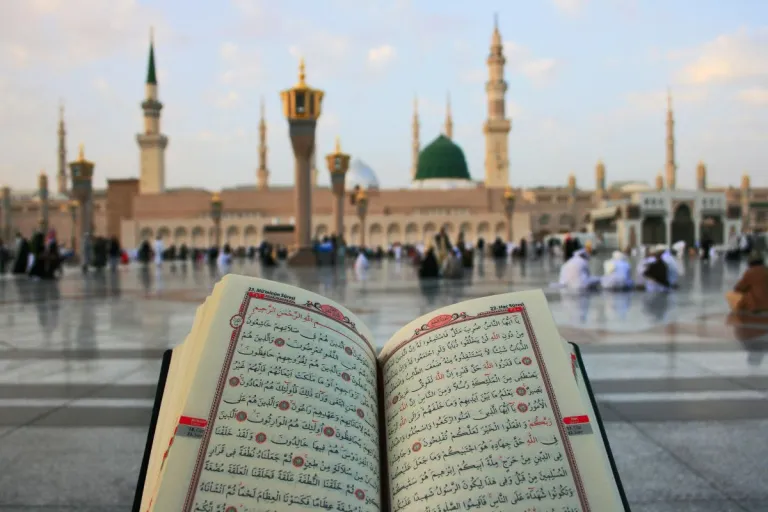 Image credit: desertofsnowflake via Canva Pro
Image credit: desertofsnowflake via Canva Pro
Familiarise yourself with the rituals: Watch instructional videos, attend community workshops, or consult experienced pilgrims to gain a clear understanding of the steps.
Learn basic Arabic phrases: Knowing key phrases such as greetings, directions, and supplications can enhance communication and enrich the experience.
Stay connected: Keep a local SIM card or a roaming plan to stay in touch with family and travel companions. This is particularly helpful for navigating unfamiliar areas.
Be mindful of timing: Perform rituals during off-peak hours when possible to avoid large crowds and minimise waiting times.
Practice patience: The pilgrimage requires endurance and adaptability. Stay calm and focused even in challenging situations.
Performing Hajj: Key rituals
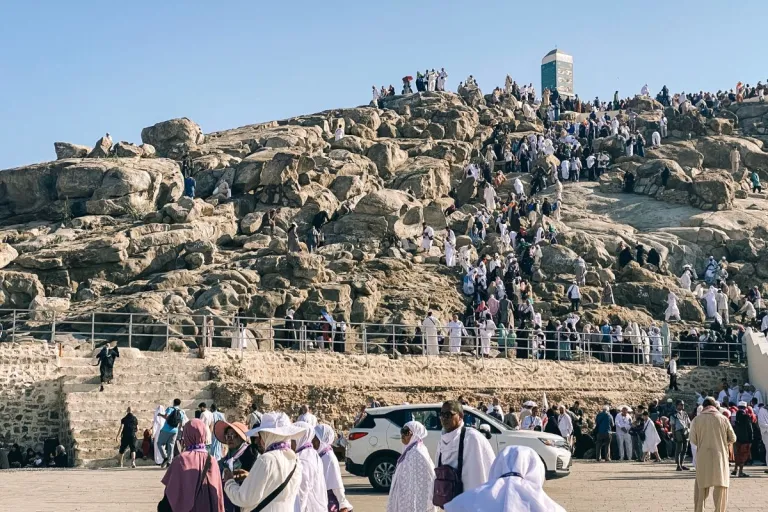 Image credit: Gatot Adriansyah via Canva Pro
Image credit: Gatot Adriansyah via Canva Pro
Also read: How to Perform Hajj: The Various Stages Step-by-Step
Ihram: As with Umrah, pilgrims enter into Ihram and declare their intention for Hajj.
Day of Tarwiyah (8th Dhu al-Hijjah): Pilgrims proceed to Mina and spend the day in prayer and reflection.
Day of Arafat (9th Dhu al-Hijjah): Standing in prayer at the Plain of Arafat, pilgrims seek God’s mercy in what is considered one of the most pivotal moments of Hajj.
Muzdalifah: After sunset, pilgrims travel to Muzdalifah to perform Maghrib and Isha prayers and collect pebbles for the following day’s ritual.
Ramy al-Jamarat (Stoning of the Devil): Over three days in Mina, pilgrims throw pebbles at three pillars, symbolising the rejection of evil.
Tawaf al-Ifadah: Another Tawaf around the Kaaba is performed, signifying the completion of Hajj.
Eid al-Adha Sacrifice: Pilgrims participate in the ritual animal sacrifice, commemorating Prophet Ibrahim’s willingness to sacrifice his son in obedience to God.
Tips for a fulfilling pilgrimage
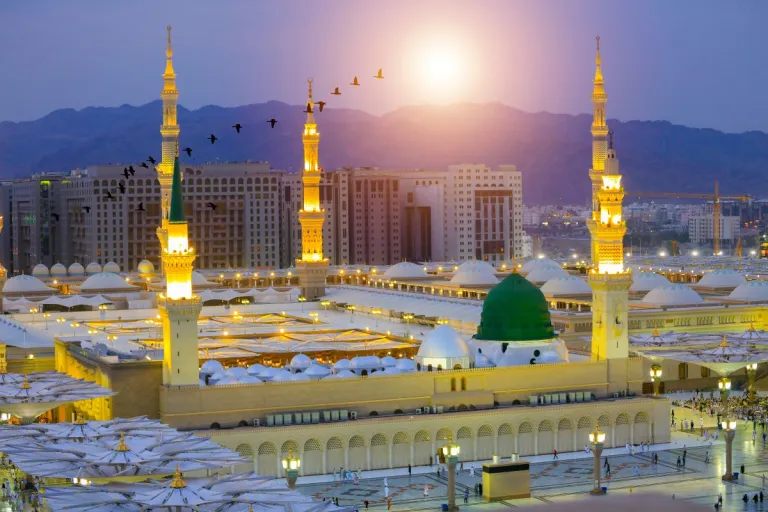 Image credit: Muhur via Canva Pro
Image credit: Muhur via Canva Pro
Spiritual preparation: Regular prayers, Quran recitation, and seeking forgiveness are essential for mental and emotional readiness.
Physical readiness: Building stamina through regular physical activity, such as walking, is recommended to prepare for the demanding rituals.
Hydration and nutrition: Given the desert climate, staying hydrated and consuming balanced meals is crucial for maintaining energy.
Respecting local customs: Adhering to cultural norms and the laws of Saudi Arabia ensures a respectful and trouble-free experience.
Emergency preparedness: Carry a small first-aid kit, know the location of medical facilities, and have emergency contact numbers readily available.
Hajj and Umrah represent journeys of a lifetime, offering opportunities for profound spiritual growth and reflection. With proper preparation and a clear understanding of the rituals, pilgrims can make the most of these sacred experiences and fulfil significant pillars of their faith.
Published at
About Author
Aimi Zulkiflee
Subscribe our Newsletter
Get our weekly tips and travel news!
Recommended Articles
10 Best Halal-Friendly Destinations in The Philippines for Muslim Travellers 10 Best Halal Restaurants in Pattaya Serving Authentic Thai Cuisine Let's try Halal Authentic Thai Cuisine in Pattaya
The 10 Best Indonesian Restaurants in Mecca and Madinah for Hajj and Umrah Pilgrims comforting flavor of Nusantara cuisine while Umrah
10 Best Places for Muslim Travellers to See Tulip Festivals in 2025 Fun Fact: Tulips didn’t actually come from the Netherlands but Türkiye!
Top 10 Popular Muslim-Friendly Destinations to Visit in 2025 Our schedules are packed, buddies!
Latest Articles
Best Hotels Near Universal Studios Japan (USJ) for Muslim Travelers The best solution is to stay at a strategically located hotel near USJ
Muslim-Friendly Guide to Western Australia: Halal Food, Spiritual Comfort, and Adventure a guide to the best Halal culinary spots and thrilling adventures you must try
11 Best Thrift Stores in Singapore (2025): Muslim-Friendly Budget Shopping Guide Happy shopping in Singapore, and may you find your hidden treasure, sustainably and Muslim-friendly!
ETIAS for Singaporeans: Your Halal Guide Before Traveling to Europe in 2026 Well, apparently Singaporeans Need ETIAS to Travel to Europe by 2026
Malaysia Launches Muslim-Friendly Cruise Ship This November This marks the world's first Muslim-friendly cruise ship!

